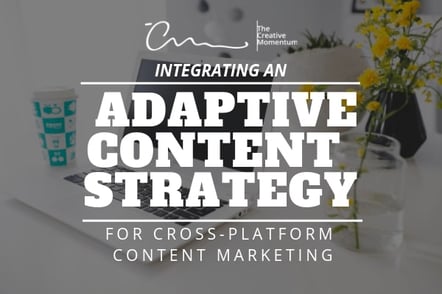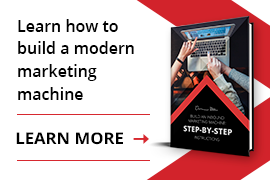
Adaptive content has several characteristics. The content reformats itself for differently-sized screens or platforms (without any input from the publisher), and it presents, in a dynamic fashion, different chunks of content based on the interface used. Together, it’s a type of content publishing automation that provides easy distribution across platforms.
Aside from the backend efficiency, this is the best way to communicate with your customers. It cuts through the limitations of publishing platforms and guarantees that each piece of content is delivered exactly the way it should be.
Creating Adaptive Content
The benefits of platform-agnostic content are obvious—but how do publishers pull it off? Adaptive content relies on five elements.
1. Content Reusability
Adaptive content doesn’t live in a specific context; it needs to be reusable in different situations. The platform will make these decisions based on how you structure your content, but you’ll need to help it along. Depending on where you’re publishing, you may need to write multiple headlines, descriptions, or calls-to-action that help make a piece reusable across platforms.
2. Content Chunking
Content must be broken into usable “chunks” that platforms can organize as needed; for example, Introduction, summary, quotations, body content, and so on. By defining each section with the appropriate tags and metadata, platforms will understand the context of each chunk and when to apply it to their layouts.
3. Presentation Flexibility
Adaptive content needs to be separated from the form of its publishing platform. This comes back to our above two points, but it extends further into the realm of HTML formatting and markup structure. Many content management platforms offer rich text formatting as a publishing standard, but this structure prevents content from working across platforms. Each element in the presentation needs to have its own self-contained value.
4. Metadata Expertise
Metadata provides context for content, a crucial aspect of adaptive content production. Titles, keywords, tags, and category details all help the publishing platform highlight relevant content and filter irrelevant details. This is one of the most important parts of adaptive content, as metadata is a primary filter used to determine which values are assigned to each piece of material (and thus, which content aspects will be included in the presentation).
5. Platform Knowledge
The last piece of adaptive content is understanding how each platform will present your content. This a particular concern for mobile, where screen real estate is limited, but it applies to every platform. How will the content be presented? Where will the images appear? Will each layout include the content’s video? Which aspects will be prioritized in different delivery formats?
Integrating Adaptive Content
Bringing adaptive content into the fold begins with an examination of your current content assets. Are you planning to repurpose your existing content into a more adaptable format or start an adaptive content strategy from scratch?
Either way, you’ll start by stripping down the content to its most basic elements: main points, keywords used, concepts, and so on. And as detailed above, you’ll be structuring these pieces to be written in brief, readable chunks that are optimized with each topic’s relevant keywords.
Think about what kind of UX you want to create. Which platforms do you expect your content to be published on? Adaptive content will be publishable on any type of content platform, but it’s beneficial to lay out your goals ahead of time.
Prioritize Your Metadata
The most important aspect of integrating adaptive content is understanding the role metadata plays.
In content terms, metadata means context, and context means flexibility. The more semantic information you can provide about each piece of content, the better each platform will be able to present it. This is another good reason to break up your content into more readable chunks. When a piece of content includes long paragraphs and interconnected diatribes, it becomes much harder to split into pieces while still making sense. This is a big challenge for adaptive content, as the process relies on content flexibility.
But when you write content in smaller, more manageable pieces, it’s easy to assign specific labels to each section and other metadata tags that can help platforms mix and match as needed.
Control Your Platform—Don’t Let It Control You
One of the biggest cultural shifts we’ve seen in the push for adaptive content is a reframing of the relationship between platform and developer. In short, adaptive content flips the script on this relationship; developers are no longer limited to the stylistic choices inherent to each platform. This means they can actually design content in a way that makes sense for the user instead of the platform itself.
Another way of looking at this is decoupling the content platform from the content. Developers need to look at each form field and see what value it adds to the publishing. In many cases, developers struggle here, as most platforms were designed for monolithic publishing across a limited set of desktop platforms. Using a platform that decouples processes for creating, editing, tagging, and reusing content removes these limitations, and it gives you the most flexibility in presenting your content in its best form.
Starting Your Adaptive Content Integration
At its core, adaptive content means moving away from our pre-conceived notions of publishing specific content for specific platforms, and moving into the realm of “contextless” content. Regardless of where it’ll end up, every piece of content should be created for ease of publication across platforms. Keep this in mind as you create content, and focus on creating posts built from small, readable chunks. Include tags and labels across as many fields as possible, and make sure your content management system is capable of supporting it.
There’s a lot that goes into adaptive content, but with the right support, you can work toward a publishing system that sets you head and shoulders above the competition—both today and in the years to come.

